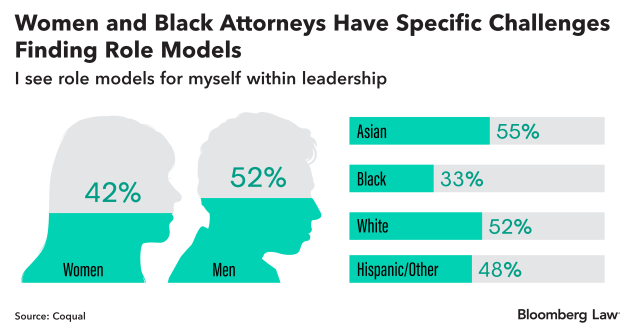The legal profession has work to do to increase diversity in its ranks, as 86% of active attorneys identify as White, according to ABA statistics. Robert Grey, president of the Leadership Council on Legal Diversity, says general counsel and managing partners can be part of the solution by committing to work together and leading by example.
It’s no secret that the legal profession has been historically slow to change, and nowhere is this more apparent than in its lack of diversity.
Of the more than 1.3 million active lawyers in the U.S., 86% are White and only 37% are women, according to the ABA. Even more startling is a survey from the National Association for Law Placement (NALP) that found that Black partners and Black associates exceeded 2% and 5%, respectively, for just the first time in history.
Clearly, this needs to change so that the legal profession reflects the nation’s increasingly diverse population.
The Leadership Council on Legal Diversity (LCLD), the nonprofit organization I lead, has been working to address this problem for more than a decade. We empower our 350 members—corporate general counsel and law firm managing partners—to actively engage in shaping the careers of thousands of diverse lawyers through our programs.
Our “Leaders at the Front” initiative challenges LCLD members to make public their commitments to expanding diversity, equity and inclusion (DE&I) within their organizations. By raising their collective voice, LCLD leaders are working to make their own organizations, and by extension, the legal profession, more equitable and inclusive. After launching five months ago, 61 members have committed to the program.
Systemic Barriers Need Dismantling
This is a long road—the numbers over the last decade reflect that. After experiencing several years of declines, the percentage of associates who are Black women in 2020 (3.04%) finally surpassed the 2009 figure of 2.93% for the first time, according to NALP.
Women, people of color, and women of color all made small improvements in representation at the partner level, and Black partners overall finally surpassed 2% for the first time since NALP began collecting this data in 1993.
As Bradley M. Gayton, the general counsel of Coca-Cola, pointed out in an open letter, “We believe that diversity of talent on our legal matters is a critical factor in driving better business outcomes. We will no longer celebrate good intentions … we are no longer interested in discussing motivations, programs, or excuses for little to no progress—it’s the results we are demanding and will measure going forward.”
Coca-Cola is not alone in this. Novartis, HP, and others have issued similar mandates to their outside providers. The solution, however, is not just to hire more diverse lawyers. We also need to dismantle the systemic barriers preventing underrepresented attorneys from achieving the highest levels of leadership within law firms and corporate legal departments.
LCLD recently commissioned a study by the nonprofit think tank Coqual, (formerly Center for Talent Innovation), which confirmed the importance of visible role models in senior leadership. It also found that there remains a significant deficit in sponsorship of diverse lawyers.
Only 49% of respondents believe that their firm or company is inclusive and many report a lack of access to crucial networking and sponsorship opportunities, which are key to advancement. Some 59% of the respondents said that race/ethnicity negatively affects who wins sponsorship from leaders. An equal number, 58%, said the same thing about gender.
The leaders of LCLD are using their power to change the internal systems that have impeded the advancement of diverse lawyers for generations. Some of their plans include advancing diverse lawyers, particularly Black lawyers, to ownership/equity partner levels in greater numbers. Others establish succession plans that will enable more diverse lawyers to ascend as relationship partners to top clients.
Consider Kim Koopersmith, chairperson of Akin Gump Strauss Hauer & Feld LLP, who has pledged that a diverse lawyer will be one of the two or three lawyers identified to succeed senior partners on several key clients annually. Ellen Dwyer, chair of the executive committee of Crowell & Moring LLP, committed her firm to appointing a diverse lawyer as one of three candidates to succeed a senior partner, once they are 65 years old, as the primary relationship partner.
Many firms are implementing sponsorship programs for diverse lawyers, assigning work more equitably, and creating processes to guide DE&I efforts—while tying these efforts to performance evaluations and compensation. Some firms are now giving billable hours credit for DE&I activities.
Change is hard, and in the legal industry, it is rare. But, general counsel and managing partners can solve the legal profession’s diversity problem by working together and leading by example. Transparency and commitment is the only way to bring about the systemic, sustainable, and scalable change that we seek.
This column does not necessarily reflect the opinion of The Bureau of National Affairs, Inc. or its owners.
Write for Us: Author Guidelines
Author Information
Robert Grey is president of the Leadership Council on Legal Diversity. A former president of the American Bar Association, Grey is a retired senior partner with Hunton Andrews Kurth LLP.
Learn more about Bloomberg Law or Log In to keep reading:
Learn About Bloomberg Law
AI-powered legal analytics, workflow tools and premium legal & business news.
Already a subscriber?
Log in to keep reading or access research tools.

